The Year: 1624 Although the Netherlands only controlled the Hudson River Valley from 1609 until 1664, in that short time, Dutch entrepreneurs established New Netherland—a series of trading posts, towns, and forts up and down the Hudson River that laid the groundwork for towns that still exist today. The Early Years New Netherland was on the eastern coast of North America in the 17th century which stretched from latitude 38 to 45 degrees north as originally discovered by the Dutch East India Company with the yacht Half Moon under the command of Henry Hudson in 1609. On October 11, 1614, merchants from the cities of Amsterdam and Hoorn formed the New Netherland Company, receiving a three-year monopoly for fur trading…
Category: Thirteen Colonies
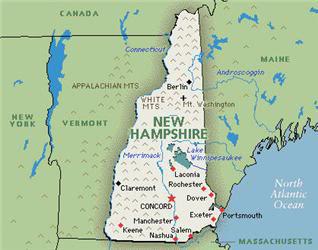
New Hampshire Colony
The Year: 1629 One of the New England Colonies, New Hampshire began as a proprietary colony – a colony in which private land owners retained rights that were normally the privilege of the state. King James I provided ships, provisions, and free land – with one important condition, that it always be subject to the English crown. So it remained until the Revolutionary War. Land in the New World was granted to Captain John Mason who lived in Hampshire County, England. In 1623, Mason sent two groups of English settlers to establish a fishing colony in what is now New Hampshire, at the mouth of the Piscataqua River.
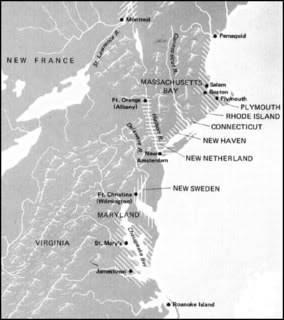
New England Colonies
The 1630s The Puritans who settled the New England colonies came to America to escape religious persecution in their homeland. Their isolation in the New World, their introversion, the harshness and dangers of their new existence insured that American Puritanism would remain more severe than that which they had left behind. The Puritans believed that they were the Chosen People of God destined to found a New Jerusalem—a New City of God in the wilderness. They interpreted the Bible more literally than their British counterparts, and sought to establish a purified church, which sometimes meant imposing their religious beliefs on unwilling citizens.

The Beginnings of Boston
The Founding of Boston Image: Ships in Boston Harbor A fleet of 11 ships carrying the residents of the Massachusetts Bay Colony landed at Salem and Charlestown in 1630. John Winthrop, aboard the Arabella, landed at North River near Salem on June 12, 1630. Salem was short of food and not able to support another thousand inhabitants. Winthrop decided to locate the colony at Charlestown because of its proximity to the harbor, but the colony did not flourish there, partly due to the lack of good drinking water. Across the Charles River, William Blackstone, a former clergyman, was living an isolated existence as a trapper. Word came to him from his Indian friends of the difficulties his fellow countrymen were…
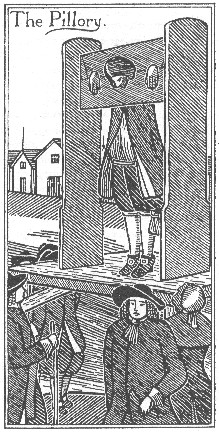
Puritan Laws and Customs
Puritans Lived Under Harsh Rules During the seventeenth century, the combined New England colonies formed a virtual Puritan commonwealth. They had separate governments, but their hopes, their laws and their past history were almost identical. The entire political and social system they established was built on the Puritan religion. As a whole, they professed to love liberty, but the individual Puritan was restrained by strict laws that governed every area of his life – even his family relations. A man could not kiss his wife in public. A Captain Kimble, upon his return from a three-year voyage, kissed his wife on his own doorstep, and he spent two hours in the pillory for his lewd and unseemly behavior.
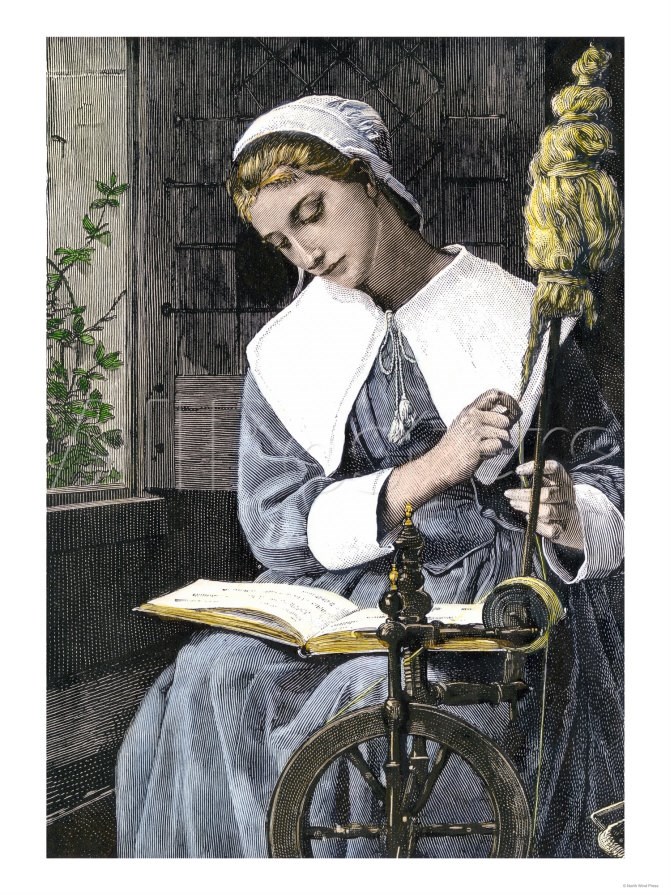
Puritan Women’s Rights
Massachusetts Bay Colony was a man’s world. Women did not participate in town meetings and were excluded from decision making in the church. Puritan ministers furthered male supremacy in their writings and sermons. They preached that the soul had two parts, the immortal masculine half, and the mortal feminine half. Women and children were treated harshly in the Puritan commonwealth. Women were viewed as instruments of Satan. Children were regarded as the property of their parents. If any child was disobedient to his parents, any magistrate could punish him with a maximum of ten lashes for each offense.
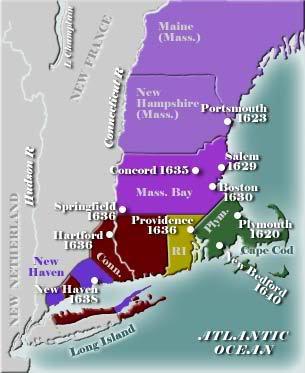
Puritans of New England
The Year: 1630 Early New England Fleeing England because of religious persecution, the Puritans were relatively well-off, and their faith gave them courage and discipline. Their aim was not to make a profit, like the Virginia colonists, but to create a City on a Hill—a god-fearing community. In 1630, a large contingent, led by John Winthrop and the Massachusetts Bay Company, and called the Great Migration, set up a republic at Boston. Their settlement expanded successfully throughout the 1640s. By 1660, with a population of 33,000, this was the most successful New England colony. Love and Marriage In Puritan society, the average age for marriage was higher than in any other group of immigrants—the average for men was 26, and…
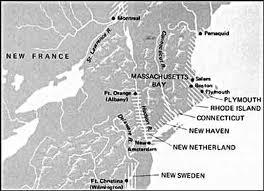
Massachusetts Bay Colony
Thirteen Colonies Image: Massachusetts Bay Colony This map shows the area known as the Massachusetts Bay Colony during the 17th century. Settlers soon branched out and settled the areas that would be known as Connecticut, Rhode Island and New York. The Puritans were a religious group in England. They did not want to separate from the Anglican Church like the Pilgrims. They wanted to purify the church. In 1629, the Massachusetts Bay Company obtained a charter allowing it to trade and colonize in New England. Its Puritan stockholders envisioned the colony as a refuge from religious persecution.
Bridget Fuller
The Year: 1623 Bridget Fuller arrived at Plymouth Colony on the Anne in 1623. She was Dr. Samuel Fuller’s third wife, and they had two children together. Details of Bridget’s life aren’t readily available, but we can gain some insight into her life by following her husband’s history. Samuel Fuller was one of the original members of the Separatist church who fled England for Holland in 1609. He became a physician, making him an important member of the congregation. He later became a deacon of the church at Plymouth Colony. He sailed on the Mayflower in 1620. Upon arrival in the New World, Dr. Fuller signed the Mayflower Compact, along with the other adult males. He did what he could…
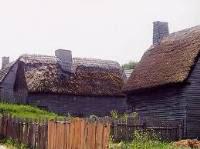
Plymouth Colony Houses
Home Sweet Home On January 1, 1621, the leaders of Plymouth Colony made land assignments by counting “how many families there were, willing all single men that had not wives to join with some family as they thought fit, that so we might build fewer houses; which was done and we reduced them to nineteen families,” wrote William Bradford. “We went to labor that day in the building of our town, in two rows of houses for more safety.” Image: English Style Thatched Cottages The thatched roofs of sun-dried reeds were thick so the water would drain off, but they must have leaked during heavy rainstorms, and they were likely to catch fire if a spark went up from the…